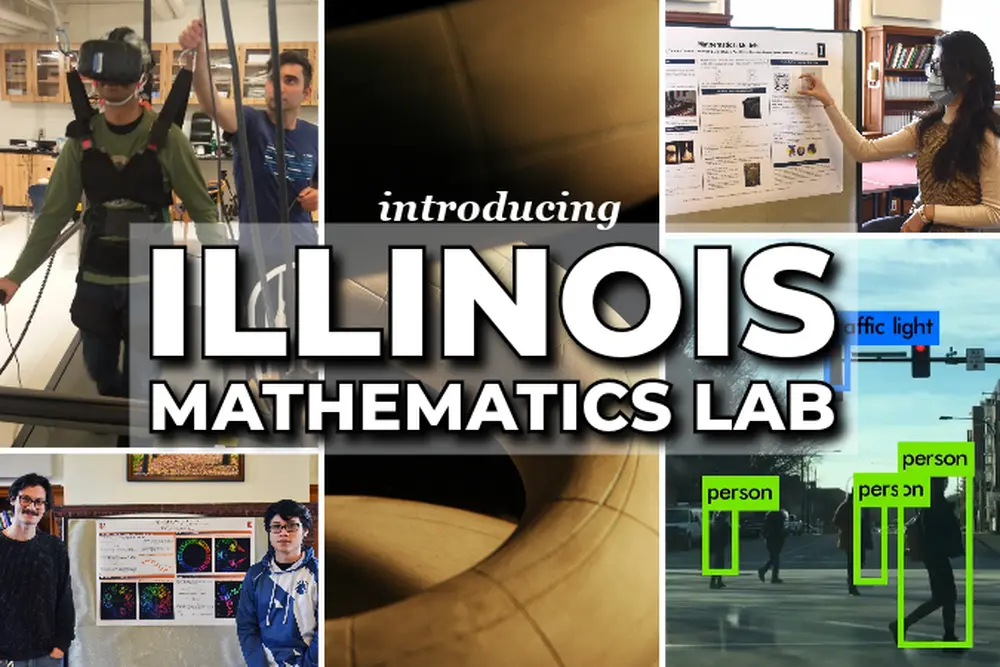
The Illinois Geometry Lab (IGL), operated by the Department of Mathematics at UIUC, offers some of the most sought-after experiences to math majors at Illinois, providing opportunities for students to work directly with faculty members on mathematics research projects. But its name has been a source of confusion for the past several years, as it suggests a more limited scope of offerings than what students can find within the program.
To better represent the scope of its activities, the Illinois Geometry Lab has changed its name to the Illinois Mathematics Lab (IML).
“The name IGL reflects our heritage and our history, but IML represents our current reality and the breadth to which the program has grown in the twelve years since its beginnings in geometry research and visualization,” says IML Director Karen Mortensen.
The IGL was originally founded Professor Jayadev Athreya and graduate student Anton Lukyanenko in Fall 2011, with the vision of providing research opportunities to a small group of undergraduate students. In the early years of the Illinois Geometry Lab, students could participate in research projects in geometry and visualization and were all mentored by its two founders.
“Thanks to grant support and substantial commitment by the faculty, graduate students, and alumni of the Department of Mathematics over the last decade, the IGL grew well beyond that vision,” Mortensen says.
Today, the lab’s projects run the gamut of mathematical research areas, not just those related to geometry. Recent research projects have been from the fields of number theory, data analysis, graph theory, mathematical physics, function theory, probability— to name just a few.
For example, in the past, students in the program have used statistical and probabilistic methods to analyze professional sports teams, designed quantum machines, developed mathematical tools to help scientists study information channels, catalogued and studied the university’s extensive collection of historical mathematical models, and mathematically modeled the ringing patterns of Altgeld Hall’s chimes.
The lab also began offering scholarships to increase undergraduate student participation, alongside fellowships to support participating graduate students during summer sessions.
Mortensen indicates that the name change became somewhat of a necessity given the program’s expansion.
“In my first semester as director, I’ve already encountered undergraduates who told me they had hesitated to apply for IGL research projects because they didn’t know much geometry,” she says. Mortensen hopes that the name change will clarify for students the scope of the lab’s activities and cast a wider net in attracting undergraduate students.
Along with the name change, the Illinois Mathematics Lab also launched a new website. Interested students and faculty members can find information about upcoming projects and how to apply for opportunities and scholarships through IML.
The Illinois Mathematics Lab will continue participating in mathematical outreach activities for local K–12 students and the public, including demonstrations at STEM nights, local science fairs, and guided field trips. Organizations or individuals interested in partnering with IML to host a math outreach activity should visit the IML website to learn more about current initiatives and get in touch with current IML leadership.
Mortensen also hints at additional activities that IML is planning, to give students and faculty members an opportunity to participate in the renaming: “Keep an eye out for information about a logo design contest to take place in the spring semester,” she says.
The Illinois Mathematics Lab is supported in part by donor funds. To learn more about how you can support student research experiences in mathematics, visit the Department of Mathematics research giving page.